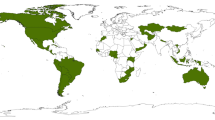Abstract
OBJECTIVE: Although the benefit of folic acid (FA) to prevent neural tube defects (NTD) is well established, not all women take supplements in the periconceptional period. This study used data from the Public Health Agency of Canada’s Maternity Experiences Survey to evaluate determinants of awareness of FA among recently pregnant women in Canada, and the extent to which that translated into actual supplement usage.
METHODS: Telephone interviews took place between October 23, 2006 and January 31, 2007 with women who were 5 to 14 months postpartum to survey their experiences during pregnancy, birth and the postpartum period. These analyses were conducted on women who responded to questions relating to FA supplementation. The 6,421 respondents were weighted to represent 76,508 women using weights which corresponded to the sampling strata, the mother’s first language and Aboriginal status.
RESULTS: Overall, 77.6% of surveyed women knew that taking FA periconceptionally could help protect against NTD. Women who were younger, single or separated reported less awareness and use of FA, while higher maternal age, level of education and income were positively associated with both knowledge and use. Despite longstanding national guidelines for supplementation, there were regional variations in knowledge and use of FA.
CONCLUSION: The data indicate clear socio-demographic differences among Canadian women with respect to their knowledge and use of FA. Although most women understood the benefits of FA supplementation, a little over a third of them did not take FA supplements prior to becoming pregnant, and less than half supplemented according to national guidelines. Identification of those subpopulations whose use of supplements is suboptimal may allow for targeted educational or other interventions to further encourage FA use.
Résumé
OBJECTIF: Les avantages de l’acide folique (AF) pour prévenir les anomalies du tube neural (ATN) sont bien démontrés, mais toutes les femmes ne prennent pas de suppléments nutritifs durant la période périconceptionnelle. Nous avons utilisé les données de l’Enquête sur les expériences de la maternité de l’Agence de la santé publique du Canada pour évaluer les déterminants de la connaissance de l’AF chez les femmes ayant été enceintes récemment au Canada, et la mesure dans laquelle cette connaissance se traduit par l’usage réel de suppléments.
MÉTHODE: Nous avons mené des entrevues téléphoniques entre le 23 octobre 2006 et le 31 janvier 2007 avec des femmes entre le 5e et le 14e mois post-partum afin de connaître leur expérience durant la grossesse, l’accouchement et la période post-partum. Ces analyses ont été menées pour les femmes ayant répondu aux questions sur la supplémentation en AF. Les 6 421 répondantes ont été pondérées pour représenter 76 508 femmes à l’aide de pondérations correspondant aux strates de l’échantillon, à la langue maternelle de la mère et au statut autochtone.
RÉSULTATS: Globalement, 77,6 % des femmes sondées savaient que la prise d’AF durant la période périconceptionnelle pouvait protéger contre les ATN. Les femmes plus jeunes, célibataires ou séparées ont déclaré moins connaître et moins utiliser l’AF, tandis que l’âge maternel, le niveau de scolarité et le revenu plus élevés étaient liés positivement à la connaissance et à l’utilisation de l’AF. Malgré les lignes directrices nationales de longue date sur la supplementation, il y avait des écarts régionaux dans la connaissance et l’utilisation de l’AF.
CONCLUSION: Nos données indiquent des différences sociodémographiques claires entre les Canadiennes en ce qui a trait à leur connaissance et à leur utilisation de l’AF. Bien que la plupart des femmes connaissent les avantages de la supplémentation en AF, un peu plus du tiers n’avaient pas pris de suppléments d’AF avant de tomber enceintes, et moins de la moitié en avaient pris en respectant les lignes directrices nationales. L’identification des sous-populations chez qui l’utilisation des suppléments est sous-optimale pourrait permettre de mener des interventions ciblées (éducatives ou autres) pour mieux encourager l’utilisation de l’AF.
Similar content being viewed by others
References
Public Health Agency of Canada. Congenital Anomalies in Canada 2013: A Perinatal Health Surveillance Report. Ottawa, ON, 2013. ISBN: 978-1-100-222259-2.
Folate status of the population in the Canadian Health Measures Survey (CMAJ (2011)). CMAJ 2011;183(13):1519.
Miller EC, Liu N, Wen SW, Walker M. Why do Canadian women fail to achieve optimal pre-conceptional folic acid supplementation? An observational study. J Obstet Gynaecol Can 2011;33(11):1116–23.
Dzakpasu S, Kaczorowski J, Chalmers B, Heaman M, Duggan J, Neusy E. The Canadian Maternity Experiences Survey: Design and methods. JOGC 2008;30(3):207–16.
SPSS Inc. Released 2007. SPSS for Windows, Version 16.0. Chicago, SPSS Inc.
Van Allen MI, Fraser FC, Dallaire L, Allanson J, McLeod DR, Andermann E, et al. Recommendations on the use of folic acid supplementation to prevent the recurrence of neural tube defects. CMAJ 1993;149(9):1239–43.
Fraser FC. Folic acid and neural tube defects. CMAJ 1995;152(9):1380–81.
Dawson LE, Hunter AGW. Low rate of adequate folic acid supplementation in well-educated women of high socioeconomic status attending a genetics clinic. CMAJ 2001;164(8):1149–50.
Neimanis IM, Paterson JM, Bain E. Preventing neural tube defects: Survey of preconceptional use of folic acid. Can Fam Phys 1999;45(JUL.):1717–22.
Public Health Agency of Canada. Evaluation of food fortification with folic acid for primary prevention of neural tube defects. 2004. Available at: http://www.hc-sc.gc.ca/fn-an/pubs/nutrition/folate-eng.php (Accessed October 1, 2013).
Belanger M-R, Gregoire J. Periconceptional folic acid intake: Evaluation of a promotional program. Can J Diet Pract Res 2003;64(4):189–94.
De Jong-Van Den Berg LTW, Hernandez-Diaz S, Werler MM, Louik C, Mitchell AA. Trends and predictors of folic acid awareness and periconceptional use in pregnant women. Am J Obstet Gynecol 2005;192(1):121–28.
Author information
Authors and Affiliations
Corresponding author
Additional information
Conflict of Interest: None to declare.
Rights and permissions
About this article
Cite this article
Nelson, C.R.M., Leon, J.A. & Evans, J. The relationship between awareness and supplementation: Which Canadian women know about folic acid and how does that translate into use?. Can J Public Health 105, e40–e46 (2014). https://doi.org/10.17269/cjph.105.4155
Received:
Accepted:
Published:
Issue Date:
DOI: https://doi.org/10.17269/cjph.105.4155




